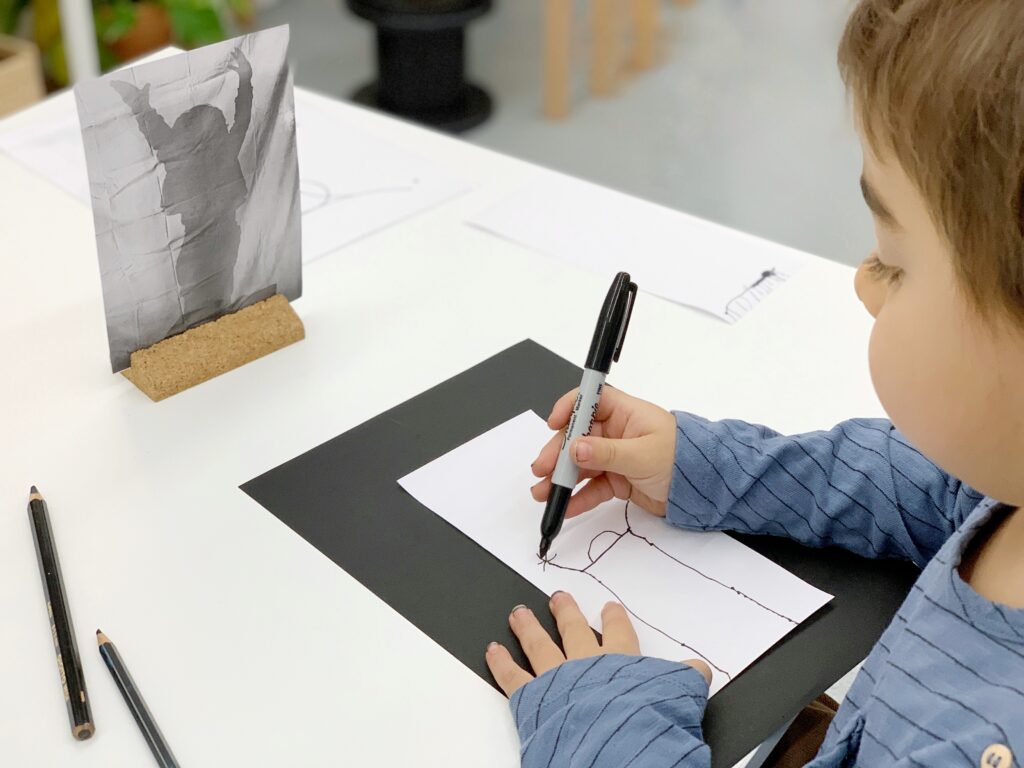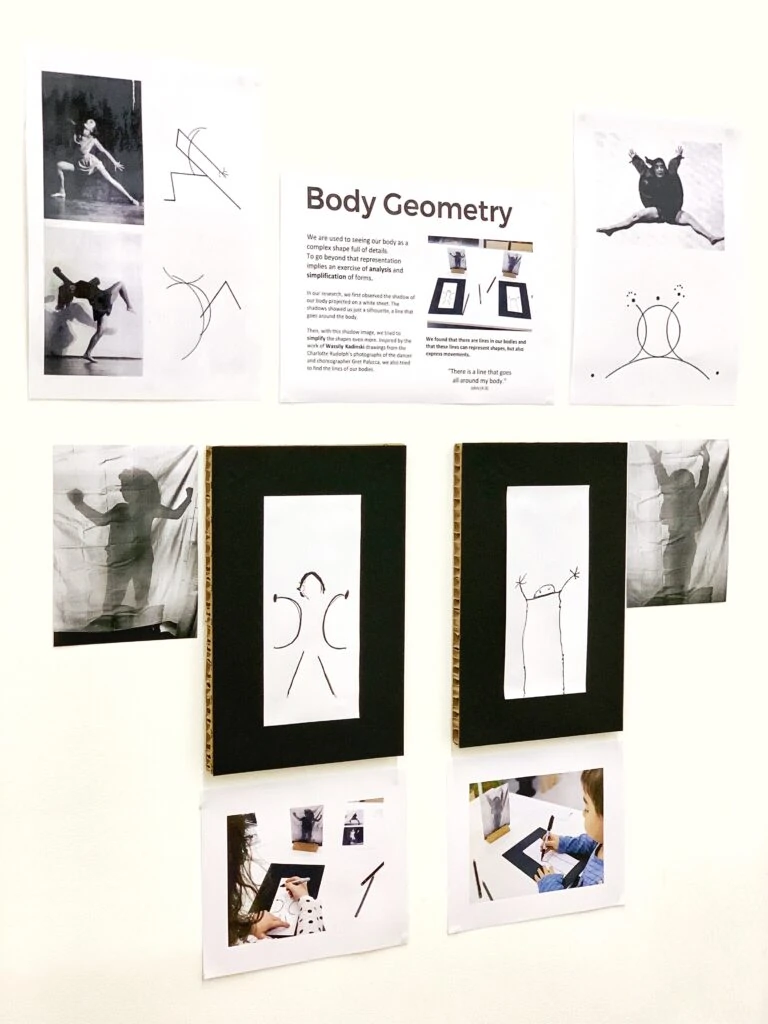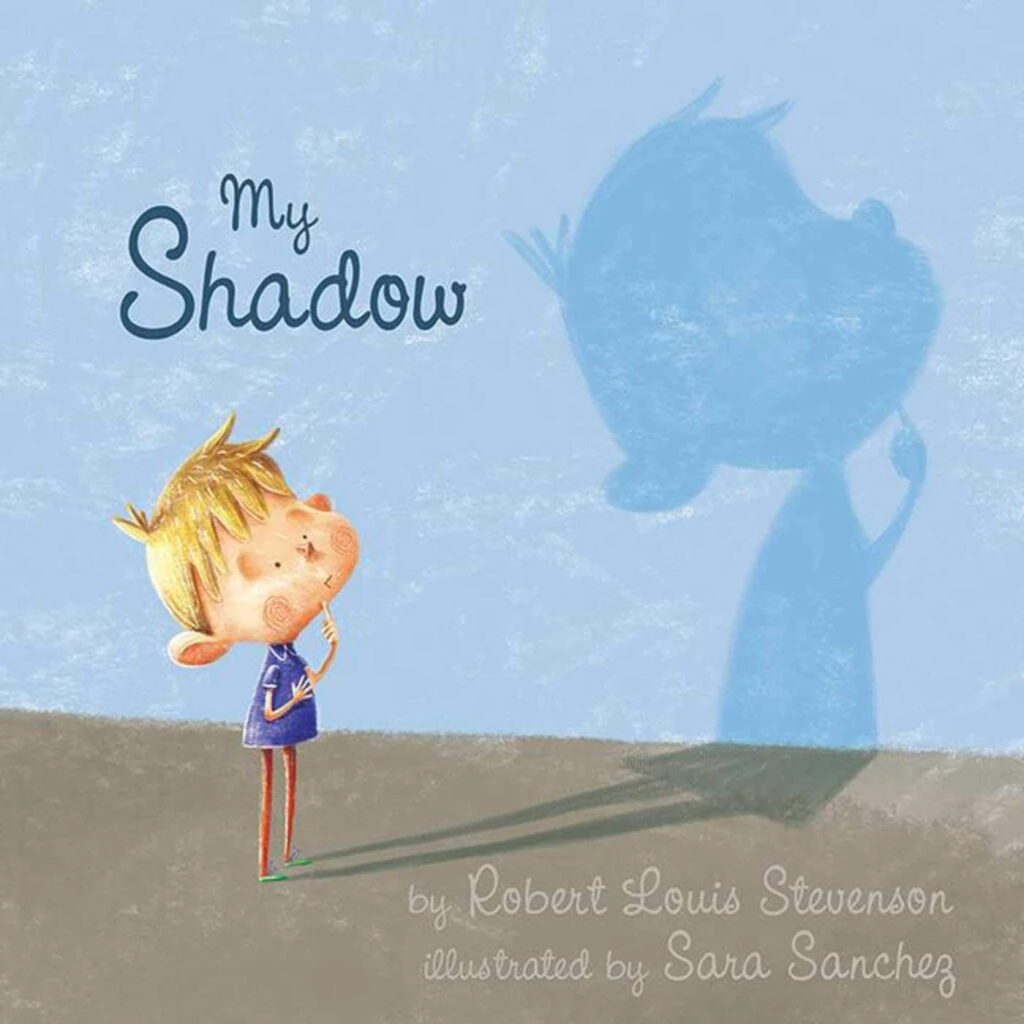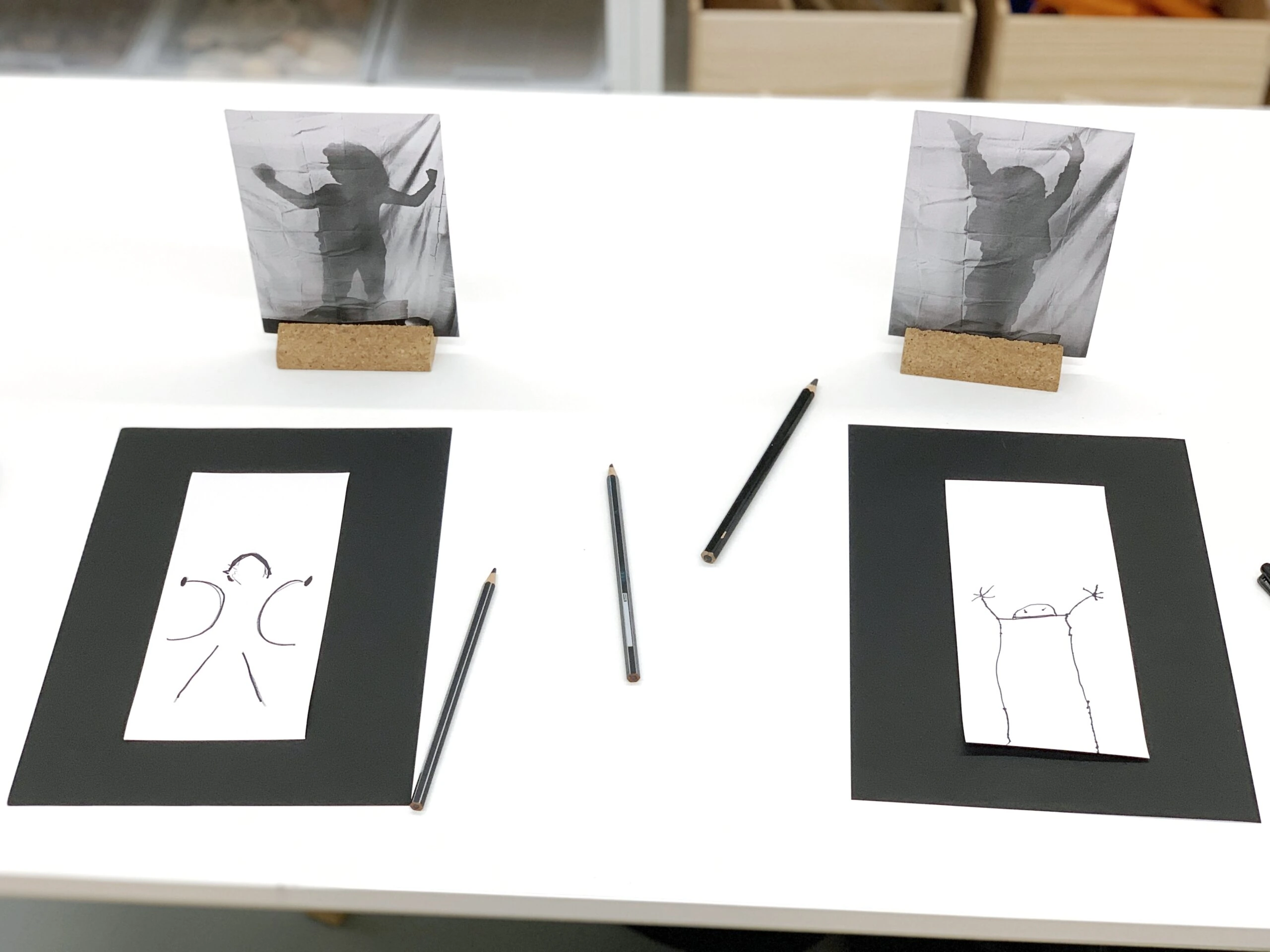We are used to seeing our body as a complex shape full of details. To go beyond that representation, we need to exercise analysis and simplification.
With this Play Invitation, children will explore their bodies’ lines and shapes through shadows, building on their body awareness, and interpretation.
Children can also explore the concepts of identity, light, shape, movement, structure, and perspective.
What Could Lead Us to This Play Invitation
- Children have been including human characters in their drawings;
- Children are curious about shadows and light phenomena;
- Children are excited about body movement and motor skills.
Materials Needed
• White fabric
• Light source
• Camera and printed photos
• Paper and pencils or black markers
Setting up this Play Invitation
- Hang a white fabric and put a light source in its direction. Children will make their poses between the light and the fabric. This way, shadows are projected on the white surface.
- Take pictures of the shadows from the other side of the hanging fabric.
- Place white paper and markers or pencils on a table. As you can see in the photos, we cut the paper into approximately 2.76 x 8.27 inches (7cm x 21cm).
- Totally optional, but we used black paper underneath to frame the white sheet. This is a way to offer an aesthetic experience and, at the same time, visual cues of the shape and size of the paper over the table’s white surface.
Tip: When choosing the light source remember that light projectors cast more sharpened edges on shadows than common lamps.

How to Play with the Shadows
- Share with the children images of Wassily Kandinsky’s work with Charlotte Rudolph.
- Dialogue with them about Charlotte’s positions and invite children to make connections with the shapes and lines in Kandinsky’s drawings. “Do you see the position of the leg in the photo and in the drawing?”
- Ask children to pose for a shadow on the fabric. Take pictures of those shadows and print them.
- Invite children to make very simple drawings of their bodies, remember Kandinsky’s work, and use their shadow photos as a reference.
Optional Next Step: Assemble documentation about this exploration.

How to Nurture the Natural Unfolding of the Child’s Identity During This Play Invitation
- Children have the right to deepen their investigations. Knowing and identifying body parts is undoubtedly essential. Still, the way we work this knowledge with children can and should have many layers. For example, bringing references from the art world helps to broaden reflection about a common subject and discover new points of view.
The Academic Learning Opportunities
- MATH: Explore shapes and lines.
- PHYSICAL: Build on body awareness and motor skills.
- ART: Develop observational skills, contact with an art reference to nurture their creativity, and explore line, shape, and composition through drawing.
Extensions
- Invite children to glue pieces of yarn over the lines adding color and texture to the drawings.
Book Recommendation

A wonderful story about a boy exploring his shadow transformations.


